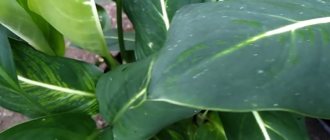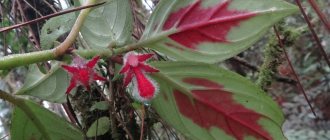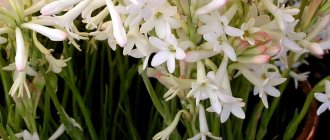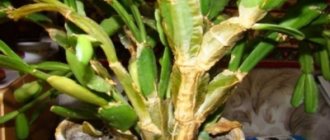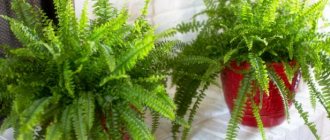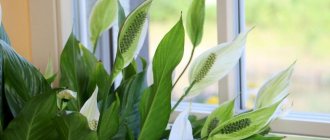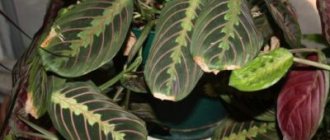For landscaping the garden, creating green walls, gazebos, canopies, many liana-like plants are used in gardening. Depending on the requirements for the vine in terms of appearance, maintenance, care and reproduction, you can choose a plant to your liking. At the same time, you can rarely find azarina in the design of a personal plot. This beautiful ornamental plant, unfortunately, is not very popular among gardeners. Azarina, or in other words Maurandia, is underestimated due to its lack of popularity, but upon closer acquaintance, the creeping plant captivates with its abundant flowering, dense foliage, and flexible stem. The bell-shaped flowers of climbing azarina delight with a variety of shades and are a good addition when decorating a garden plot.
Botanical description
Maurandia is a climbing flowering plant. In regions with warm climates it is grown as a perennial, in temperate latitudes as an annual. To better understand what it looks like, it is recommended to look at a photo of azarina.
It has strongly branching shoots that are 3-7 m long. Thin petioles extend from them, with which the stems cling to the supporting surface. Depending on the variety, the leaves can be fleecy or smooth, whole or with serrated edges. The plates are rounded-triangular with a pointed end, with a heart shape at the base. The foliage is a rich green hue.
The flowers are solitary, tubular, located in the axils. They are quite large in size, located along the entire stem, right up to the tip. Petals can be of various shades. The most common colors are violet, pink and magenta. Less often they are snow-white, blue or yellow.
Two-color buds are very rare. Flowering is long, lasting from June to September. After its completion, a fruit-box with seeds is formed.
Diseases and pests
Among the diseases, the vine is affected by fungal diseases, in most cases black leg. To combat the disease, diseased shoots are removed; as a preventative measure, the soil and stem are sprayed with a weak solution of potassium permanganate or a solution of copper sulfate.
Among the insects, the vine is attacked by aphids, which are eliminated using decoctions of garlic, pine needles, onion peels, tansy or insecticides.
Common varieties
There are many types and varieties of Maurandia. Let's consider the most beautiful of them that can be grown in the climatic conditions of Russia.
Climbing
The most common varieties are:
- Bridget White with snow-white flowers;
- Joan Loraine with purple petals;
- Mystic Rose with bright raspberry buds;
- Red dragon with scarlet flowers;
- Sky blue with blue petals.
The leaves resemble the greenery of ivy. Stems 3-4 m. This is the most common species grown in Russian gardens.
Prostrate
In the wild it is found in northeastern Spain and southwestern France. The most popular variety is Sierra Nevada. Its leaf blades are jagged along the perimeter, with a fleecy cover. Tubular flowers reach 4 cm, painted yellow. This species is able to withstand short frosts down to -15 degrees.
Antirhinotsvetkovaya
It has a fairly short stem length, it varies between 1.5-2.5 m. Small leaves are heart-shaped. The flowers reach 3 cm. The colors of the petals can be varied (blue, pale purple, red or snow-white).
Barclay
Lives in the wild in Mexico. 3.5 m long. Bell-shaped flowers grow up to 7 cm. The color of the petals can be pinkish, crimson or lilac. The pharynx has a faded tone.
Blushing
The length of the shoots is up to 3.5 m, but they can climb up the support only 120 cm. The leaf plates are fleecy and grow up to 8 cm. The flowers can reach 7 cm, the petals are painted in a soft pink tone, and there are dull spots on the snow-white throat .
Purpusa
The flowers are funnel-shaped and reach 5 cm. The color of the petals can be carmine or pale purple.
Wislecena
It has large flowers, painted in a soft purple or heavenly tone. An exception is the Red Dragon variety, which has bright ruby petals.
Interesting Facts
Azarina is hardy and resistant to various diseases. The most dangerous pest for vines is aphids. Medicinal treatment will help get rid of the parasite (for example, you should spray the plant with an infusion of onions, garlic and pine needles).
The flowers were first discovered in Mexico and then spread to the USA and Europe.
Azarina belongs to the Plantain family.
Sowing seedlings
Step by step sowing:
- Prepare the substrate at the end of January-beginning of February. To do this, mix peat, sand, leaf soil and humus in equal quantities.
- Disinfect the soil by heating it in the oven and pouring it with a solution of potassium permanganate.
- Wait a day, then scatter the seeds over the surface, press them lightly, cover them with a 5 mm layer of sand, and spray them with a spray bottle.
- Cover the container with film or glass.
Seedlings should be kept at a temperature of +15…+20 degrees. Remove film and glass daily for ventilation.
Growing Tips
Tips and tricks for growing:
- If a fungal disease is detected on the stem of a flower, the diseased sprouts must be removed and the soil layer must be filled with potassium permanganate. Thanks to this, it is possible to completely destroy pathogenic microorganisms and save the plant from death.
- For normal and effective plant growth, flower growers advise sending seedlings with containers to a lighted place and keeping the room at an average temperature.
- In order for the sprouts to hatch faster, it is necessary to prevent the ambient temperature from rising above +18 °C.
- Pathogenic fungi found in the soil layer are the main sources of blackleg that affects seedlings. Therefore, the shoot turns black, loses weight, and over time the plant dies.
- When the stem turns black, the deformed sprouts must be removed, and the soil cover in which the flower grew must be disinfected. You can also treat the substrate with a solution based on copper sulfate or potassium permanganate.
Any crop requires special care and constant monitoring when grown from seeds using the seedling method. It is flower growers who are responsible for the health of seedlings. Therefore, it is necessary to strictly adhere to the above rules for planting and maintaining climbing azarina, so that it can be used to decorate a balcony, arch or fence.
Disembarkation
Planting outdoors can be done when the temperature outside stabilizes, the risk of frost disappears, and the seedlings become stronger. This occurs approximately 10-12 weeks after sowing the seeds. Step-by-step planting in the ground on the site:
- Dig holes at a distance of 60 cm.
- Place seedlings in the holes.
- Install a support in the form of metal wire or mesh with medium-sized cells.
- When the seedlings get used to the new place a little, tie them to a support.
If you plant azarina correctly, it will bloom at the end of June.
Planting in open ground
In mid-May, it is time to accustom the grown seedlings to fresh air . To do this, in warm weather we take them out onto the balcony or into the garden for the whole day. And at night we take it indoors.
After the threat of frost has passed, young azarins can be planted in a permanent place.
Before planting, you need to install reliable support for the climbing vine. A large mesh metal mesh is best.
The place for planting azarina should be sunny and protected from strong winds. Ideally, you need to choose a site for the vine where at noon it will be in the shade of a tree, tall bush or building. Then the active rays of the sun will not be able to burn the azarina leaves.
The climbing azarina prefers neutral and light soil It should be loose and well breathable. When digging up the soil, you can improve it by adding peat, sand, humus and mineral fertilizers. We dig a spacious planting hole for the plant and be sure to fill its bottom with drainage in the form of broken bricks. This will protect the plant from stagnant moisture.
We replant the young bushes together with a clod of earth so as not to injure the roots. The distance between the plants should be about 50 cm. Next, water them and mulch the ground around the bushes with peat.
Azarina will begin to bloom in July and will continue to delight you with its beauty until the first frost.
Reproduction by cuttings
This method of breeding helps save time on growing the azarin plant. In winter, it is necessary to cut off a part of the stem about 20 cm long from a strong and healthy maurandia. The seedling should be placed in a container with water or a sand-peat mixture. When it produces roots, you can transplant it into a pot. When the weather outside stabilizes, plant the cuttings in the garden.
Care requirements
The plant needs feeding. For the first time, organic matter (infusion of mullein or chicken droppings) must be added 12-15 days after planting in the garden. Next, complex mineral mixtures are applied every 10 days.
It is very important to know how to water azarina. It is a moisture-loving plant, so it needs regular moisture. However, you need to know moderation in everything; there should be no stagnation of liquid. Otherwise, various diseases may develop. It is recommended to water as the top layer of soil dries.
For better penetration of air and nutrients to the roots, the soil must be loosened regularly. Weed control is also important. Otherwise, they will take away useful elements.
To make the shoots lush, it is advisable to do periodic pinching. It is better to tie stems that are too long to a support so that they do not break under a gust of wind. All care consists of these simple manipulations. It is quite simple and even inexperienced gardeners can do it.
Common mistakes
Beginning summer residents often make mistakes, these include:
- sowing seeds too close. The distance between future bushes should be at least 40 cm;
- When planting, the seeds are deepened too much. Often such plantings do not sprout because the planting material rots;
- nitrogen fertilizing. It is recommended to use nitrogen fertilizers in the spring. In summer, the proportion of nitrogenous fertilizers decreases. Potassium-phosphorus fertilizers are used for feeding.
By avoiding simple mistakes, you can get a beautiful flower that will decorate any gazebo.


